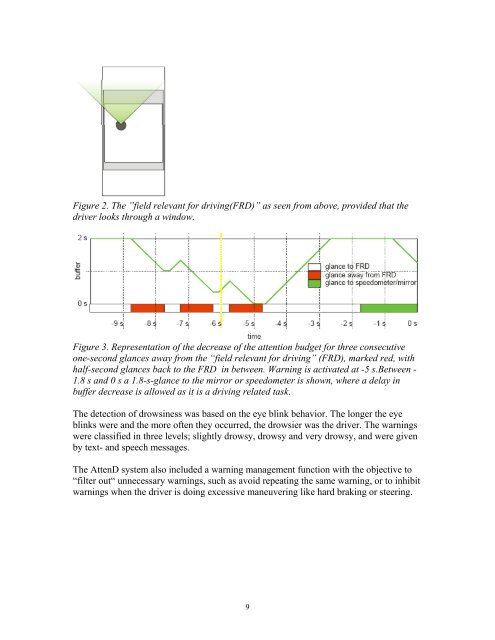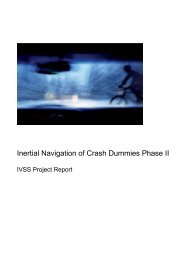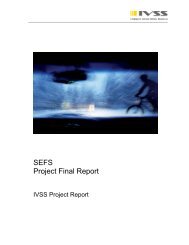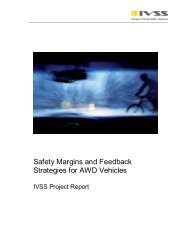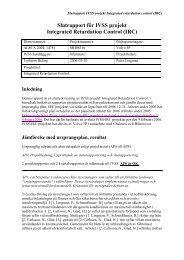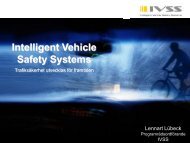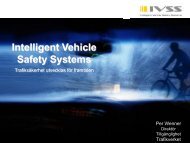7. Fulfilment of IVSS objectives - IVSS Intelligent Vehicle Safety ...
7. Fulfilment of IVSS objectives - IVSS Intelligent Vehicle Safety ...
7. Fulfilment of IVSS objectives - IVSS Intelligent Vehicle Safety ...
Create successful ePaper yourself
Turn your PDF publications into a flip-book with our unique Google optimized e-Paper software.
Figure 2. The ”field relevant for driving(FRD)” as seen from above, provided that the<br />
driver looks through a window.<br />
Figure 3. Representation <strong>of</strong> the decrease <strong>of</strong> the attention budget for three consecutive<br />
one-second glances away from the “field relevant for driving” (FRD), marked red, with<br />
half-second glances back to the FRD in between. Warning is activated at -5 s.Between -<br />
1.8 s and 0 s a 1.8-s-glance to the mirror or speedometer is shown, where a delay in<br />
buffer decrease is allowed as it is a driving related task.<br />
The detection <strong>of</strong> drowsiness was based on the eye blink behavior. The longer the eye<br />
blinks were and the more <strong>of</strong>ten they occurred, the drowsier was the driver. The warnings<br />
were classified in three levels; slightly drowsy, drowsy and very drowsy, and were given<br />
by text- and speech messages.<br />
The AttenD system also included a warning management function with the objective to<br />
“filter out“ unnecessary warnings, such as avoid repeating the same warning, or to inhibit<br />
warnings when the driver is doing excessive maneuvering like hard braking or steering.<br />
9


